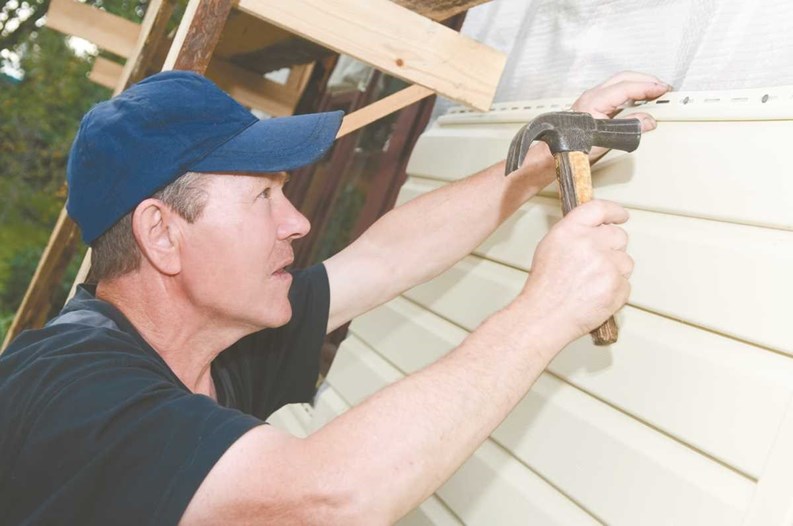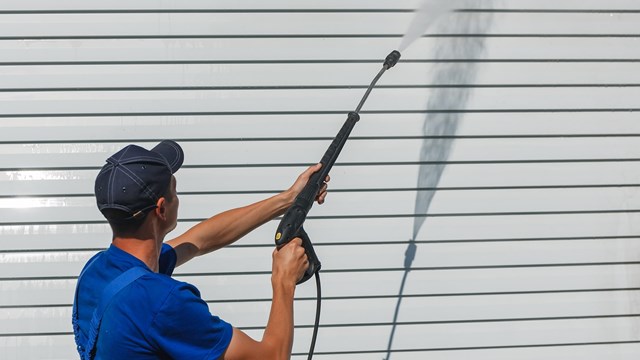As spring dawns anew on a frigid Chicago landscape, many condo dwellers will get their first prolonged looks at Mother Nature’s wintery ravages. Nowhere is this better seen than on a property’s exterior siding, much of which might need cleaning and replacement in the season ahead.
When it comes to choosing siding materials, today’s condo boards have more options than ever—from vinyl to fiber cement to eco-friendly recycled clapboards and soffits. With so many options to choose from, boards might beg the question: What siding material is best for our multifamily building? Budget, Chicago’s inclement weather and maintenance requirements are the three main factors associations should consider when choosing siding, experts say.
Planning and Budgeting
Christine Evans, president and CEO of Vanguard Community Management in Schaumburg, emphasizes the importance of boards assessing their budget realistically before anything else. “There's a lot of different factors, and a lot of planning. People just have to be sensible about it and take into consideration where their property lies in the economic world of real estate, what money they have on hand, how their delinquencies are, and if they can qualify for a loan. Knowing all that financial information will tell them what they can afford to do and what they can’t. I would say they also should consider how long it takes to do the entire community so it all looks the same, especially if they’re upgrading. You don’t want to have one section get upgraded and then have the board change and scrap the remainder of the project.”
While experts agree that there is no such thing as a single best siding for Chicago condos, there are some that stand out above the rest and a couple they suggest boards avoid. Bill Conforti, president of Siding-1 Windows-1 Exteriors located in Chicago, says while the classic option of wood is aesthetically pleasing, unless an association has enough funds and time to invest in biyearly re-painting and basic upkeep, he advises against it. The constant fluctuation of wood prices—which have nearly doubled in the past few years—could also cost associations a lot more than expected in the long run when it comes time to replace panels and take other necessary maintenance steps.
“Some people think choosing wood is a good move because it's a more expensive product,” says Evans. “And right now it's considered to be a nicer appearance than vinyl in most instances. But they have to realize what it costs to maintain it. Wood doesn't look so good if you don't maintain it. Buyers need to know what those costs are—replacing wood that rots, what's the potential for rot, how often does it need to be stained, what does that cost?” Evans also says aluminum, which used to be a popular siding option because of its affordability, has been phased out due to denting issues.
According to Conforti and Evans, vinyl is both a popular and solid option for Chicago condos, and has grown in quality and appearance greatly since the years of it being shunned as a bargain-basement siding choice. Introduced to American homeowners in the late 1950s, vinyl seemed a godsend to a post-war consumer culture built on the philosophy of newer, cleaner and better living through science. Although colorfastness was problematic initially, the following decade brought considerable advances in vinyl technology.
Soon there were vinyl products available in varying styles and thickness—some as thin as just a few millimeters—bringing a new façade within reach of any homeowner. “Vinyl siding holds up very, very well,” Conforti says. “Jobs that we did 20, 25 years ago still look great. I always have a bunch of addresses that I give my customers and say, ‘Hey, go look at these jobs that were done 10, 15, 20, 25 years ago.’ It’s that confidence we feel that these jobs really stood up to what was promised.”
Vinyl’s vast color options and relatively low initial cost and maintenance needs (the only required maintenance is a biyearly water rinse) aren’t the only positives to this siding—it can withstand the snowy, windy, rain-heavy Chicago climate for the most part. However, Damien Azitkowski, who manages ID Construction and Remodeling, Inc. in Crystal Lake, urges installers to back up the vinyl with plywood that is at least 5/8 of an inch thick to ensure it doesn’t get damaged during periods of heavy winds.
With the rising cost of new building materials and demanding post-installation needed for options such as wood and aluminum, many condo communities have begun to consider new, more affordable options for their upcoming siding projects. One such option, fiber cement clapboards, prove to be the best alternative due to its weather-resistant nature and durability, according to Azitkowski. And while fiber cement costs are initially higher than vinyl, its durability will generally save associations money and time in the long run.
Sold under trade names like Hardieplank, WeatherBoards and Maxitile, fiber cement offers clapboard siding at prices up to 50 percent less than their wooden counterparts. With product guarantees ranging from 30 to 50 years, many managers see fiber cement siding as an obvious choice for long-term cost savings. “Honestly, right now in this area, we’ve seen the best outcome with James Hardie cement board because of the fact that it doesn’t dent, it doesn’t break apart,” Azitkowski says. “If you have it installed right, your building is good for 50-60 years. You may have to fix it up in 25 years because of the paint, but that’s it.”
Do It Right or Pay the Price
Yet fiber cement is not without its detractors. Class action suits are currently pending against several prominent fiber cement manufacturers, among them the maker of the popular Hardieplank, as well as CertainTeed, with damage claims ranging from product shrinkage to cracking and warping.
However, Conforti and Azitkowski emphasize the importance of a proper installation of fiber cement, and say when done so correctly, the aforementioned reported problems will be non-existent. “When fiber cement on top of windows, you need to put flashing over them,” Azitkowski says. “Flashing is important. After you put flashing up you’ve got to tape it so if water gets behind the siding somehow it doesn’t go behind the flashing and cause more damage.”
Azitkowski also suggests associations look to company experts if there is any doubt over the quality and correctness of an installation job. “If associations decide to go with fiber cement, if you install a Hardie product on your building, you can actually call the corporation and ask for an inspector to come out after the job is done,” says Azitkowski. “If the job as not been completed up to company specifications, they will tell you to call that contractor back up and fix it. That comes out of the contractor’s pocket.”
Regardless of what siding material boards decide on, Conforti says the most important aspect of any siding job is proper installation, which starts with selecting a competent contractor. “You could have the siding in the country, the best brand out there, but if it’s a poor installation, that’s not going to do any good,” Conforti says. “Check the background of a company. Make sure they have an A+ with the Better Business Bureau—that’s important. Make sure there are no complaints out there. Get some references. You also want to make sure they’re licensed, they have proper insurance, liability and workmen’s compensation.”
Matthew Worley is a freelance writer and a frequent contributor to The Chicagoland Cooperator. Editorial Assistant Enjolie Esteve contributed to this article.







Leave a Comment